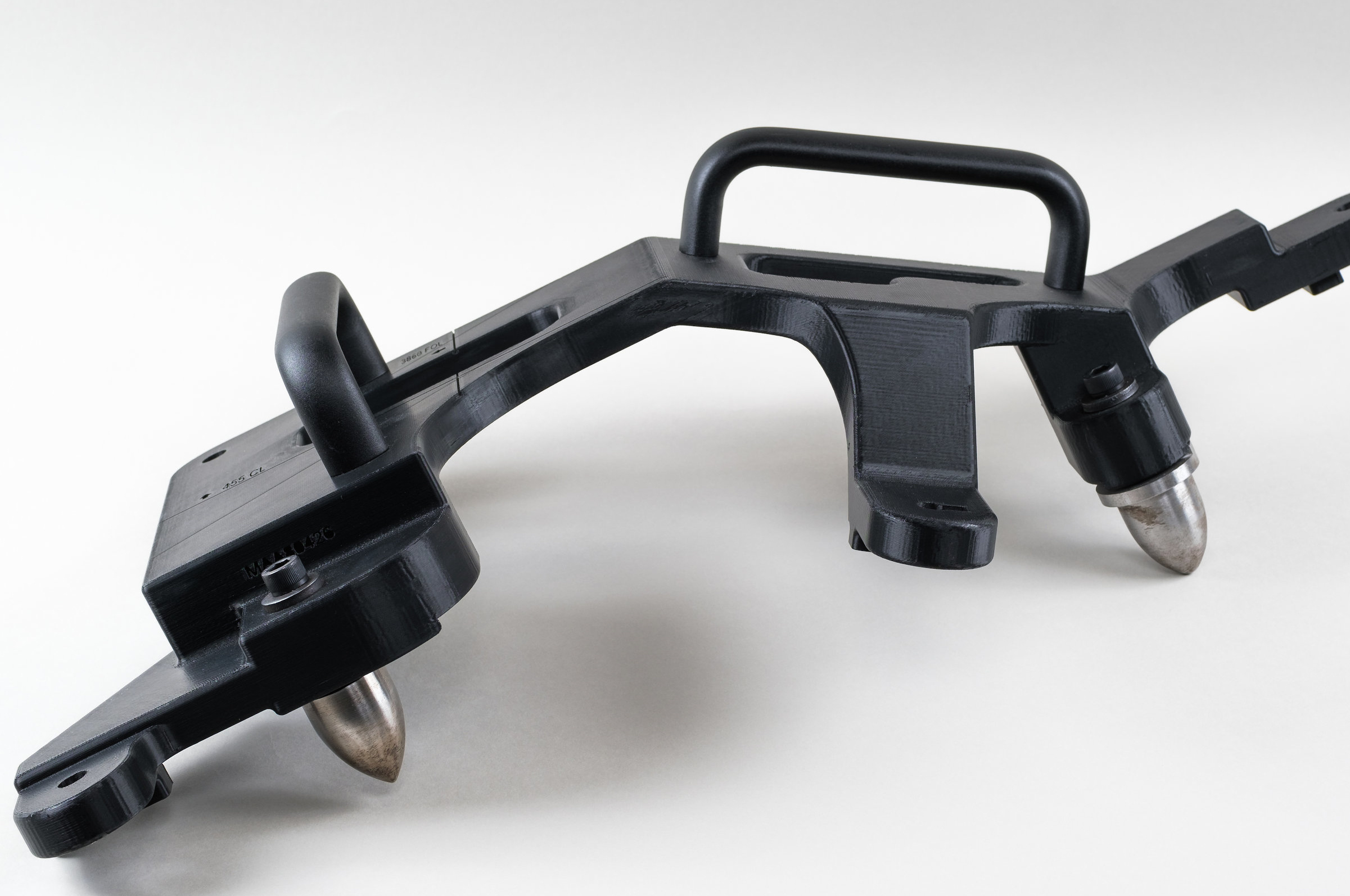American multinational vehicle manufacturer General Motors (GM) has opened a new Additive Industrialization Center (AIC), through which it aims to ‘productionize’ 3D printing.
The Michigan facility, which houses 24 polymer and metal systems, will work with its GM Ventures subsidiary to validate new uses of additive technologies. Having already printed parts for Corvette Racing, GM has now revealed that Cadillac’s upcoming road cars will now become its first to feature 3D printed components.
“The core component of GM’s transformation is becoming a more agile, innovative company, and 3D printing will play a critical role in that mission,” said Audley Brown, Director of Additive Design and Materials Engineering at GM. “Compared to traditional processes, 3D printing can produce parts in a matter of days, at a significantly lower cost.”

GM puts 3D printing into production
Although GM has used 3D printing within tooling and design applications for years, its new complex has been built to deploy the technology in the production of its road vehicles for the first time. The recently-opened 15,000 sq. ft facility features a comprehensive range of technologies, including SLS, SLM, FDM and MJF 3D printers.
Using its machine portfolio, the firm aims to drive greater efficiency within its production processes, and reduce the lead times associated with certain parts. For instance, 3D printing enables engineers to consolidate tooling parts into single optimized devices, and to quickly make iterative design changes.
This strategy has worked for GM before, as it saved $300,000 by switching to fabricated tooling in 2018, and partnered with Autodesk to optimize the weight of its vehicles. With the opening of its AIC, the firm is now scaling and validating new applications of 3D printing, as a means of driving profitability in the here and now.
“Many recent product programs have benefitted from 3D printed prototype parts in one way or another,” said Brown. “Not only can these parts save time and money, but the team also uses 3D printed applications during product development to overcome unexpected challenges in real time.”

Accelerating from prototyping to end-use
Within its AIC, GM has already developed a range of optimized tooling parts for vehicle assembly purposes. The additive devices, which include hand-apply tools, automation components and rapid-response solutions, proved to be lighter, more ergonomic and less complex than their conventional counterparts.
In the launch of its new SUVs for example, GM printed nearly 100 hand tools for its Arlington Assembly subsidiary, virtually eliminating the lead times associated with ordering spares. The firm has also worked with Corvette Racing to fabricate brake cooling ducts, that took 9 weeks less to develop, and cost 60% less to make.
Following the success of its collaboration with Chevrolet, GM’s Cadillac subsidiary has also announced that its new CT4-V and CT5-V Blackwing sedans will feature four 3D printed parts each. Leveraging additive technologies, the Cadillac R&D team has been able to optimize the upcoming car’s transmission, harnesses and ducts.
“The parts printed for the Cadillac V-Series models exemplify how we can use additive applications in the right place on the right program,” added Brown. “Ultimately, we see the potential for 3D printed parts to be used in a wide variety of production applications, [providing] greater personalization options for new-vehicle buyers.”

3D printing drives automotive efficiency
3D printing is increasingly being utilized by multinational automotive firms, not just for prototyping purposes, but developing parts for end-use in their road-faring vehicles.
Renault has made additive manufacturing central to its new circular ‘Re-Factory,’ that’s being built in the French town of Flins. The facility will focus on reducing waste by recycling and retrofitting vehicles, as well as offering a 3D printed spare parts service.
Porsche, meanwhile, has worked with machine tool producer TRUMPF and automotive parts company MAHLE, to 3D print pistons for the engine of its 911 supercar. Using an AI-led additive method, the firms were able to reduce the weight of the components by 10%, and add 30 BHP to the engine’s horsepower.
Elsewhere, researchers at Fraunhofer IAPT have worked with Fiat Chrysler Automobiles (FCA) to develop a 3D printed suspension part for one of its sports cars. By deploying AM, the team were able to integrate the vehicle’s brake caliper into its wheel carrier, making it 36% lighter and more fatigue resistant too.
To stay up to date with the latest 3D printing news, don’t forget to subscribe to the 3D Printing Industry newsletter or follow us on Twitter or liking our page on Facebook.
Are you looking for a job in the additive manufacturing industry? Visit 3D Printing Jobs for a selection of roles in the industry.
Featured image shows GM’s Manufacturing Engineer Benjamin LeBlanc inspecting a 3D printer at the Additive Industrialization Center. Photo via Steve Fecht, GM.


